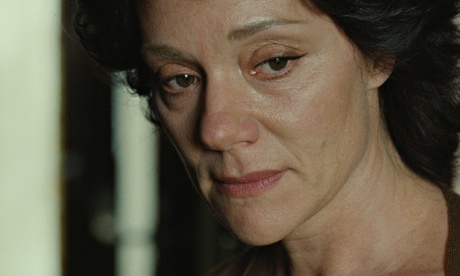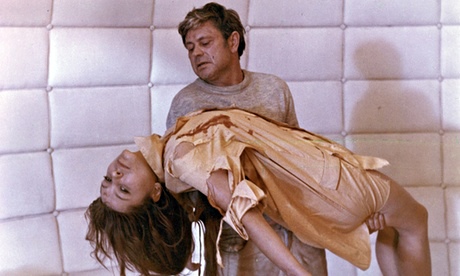The need to effectively manage workplace anxiety has become imperative as research has shown that a work environment with so increased anxiety is neither good nor productive
Workplace stress is more common than ever because employers are on a tight budget and less people are expected to do more work. In addition to financial reasons, working can be important for one’s self-esteem as it adds to your social identity.
And in the course of doing this daily job, everyone gets stressed at work from time to time.
While healthy levels of stress and anxiety are good and can be motivating; unhealthy levels, experts say can lead to decreased productivity.
Indeed, health experts say the right amount of stress can actually improve work performance. However, they emphasised that if people’s anxiety levels become too high, it interferes with their ability to work effectively.
An expert, Irene Levine explained that some anxiety in the face of stress can be a good thing adding that it helps employees work harder, prepare more thoroughly, and perform with more intensity.
She was however swift to add that people of different temperaments become anxious to varying degrees. Some, she said are laid-back and carefree while others seem to have been born to worry to excess.
However, surveys show that stress and anxiety levels among working adults have progressively increased over the past two decades.
Though, there are a host of factors that contribute to increased level of anxiety, our work culture, experts say plays a big role. This is so because the workplace is where people spend most of their productive hours; and how employees and employers process their work lives has a dramatic effect on their wellbeing.
For instance, research has shown one in every five adults -- experience anxiety so intensely that it interferes with their ability to function in the workplace. In another study of work stress by University of Otago researchers, they interviewed 900 New Zealanders in their early 30s and found that high-pressure jobs are associated with an increased risk for anxiety and depression.
Also, the World Health Organisation (WHO) reports that America is famously the most anxious nation in the world, with 31 percent of the country dealing with symptoms of anxiety.
In addition to work culture, technology is believe to be a huge part of this trend, as it's completely transformed how people live and work.
Tony Schwartz, founder of the Energy Project says it is logical for people to respond with anxiety especially in a demanding world that's increasingly complex.
Symptoms of workplace anxiety
Health experts believe the symptoms of anxiety take different forms depending on an individual's temperament, role, and workplace stressors.
The forms are procrastination, avoidance, fatigue, irritability, fearfulness, obsessiveness, perfectionism, or a feeling of constantly being overwhelmed, all of which result in diminished efficiency. In dire cases, unchecked anxiety disorders can derail careers and even result in suicide.
Other symptoms could include aggressiveness, people avoiding social situations and becoming withdrawn, changes in eating habits, worrying obsessively, decreased ability to focus and decreased tolerance to stress.
The symptoms also included habitually avoiding certain tasks such as making presentations, speaking up at meetings, returning phone calls or completing complicated projects, experiencing physical symptoms such as racing pulse, shortness of breath, cold hands or gastrointestinal upset in response to particular workplace stressors.
Some might feel overwhelmed and show mood swings and greater irritability.
In explaining the physiology of anxiety and fear, Schwartz said: “they trigger a "fight or flight" mode in the brain. "If you perceive a threat, the body will move into fight or flight, what’s called sympathetic arousal. It'll mobilize you to act very quickly – if there’s a lion coming at you. The body makes no distinction between a lion and other factors that make you feel threatened."
He emphasised that environmental factors are sometimes difficult to change adding that the best way to respond is to “take control of what you can change — and that's how you think”.
Managing anxiety
Having an anxiety disorder can make a major impact in the workplace. People may turn down a promotion or other opportunity because it involves travel or public speaking; make excuses to get out of office parties, staff lunches, and other events or meetings with coworkers; or be unable to meet deadlines.
Given this scenario, health experts say people should focus on the positive side of life and their goals for the future rather than past disappointments or embarrassing situations.
“They should also make time for fun and relaxation outside of work, get regular exercise and eat a healthy diet. You shouldn’t agree to do things you feel you can’t manage. You should also learn to identify and control anxiety symptoms.
"Try meditation perhaps and muscle relaxation exercises. If necessary, some might need professional help in the form of counselling and psychotherapy,” says Leon Gettle.
Gettler explained further that “If anxiety is causing you to feel over-stressed and pre-occupied, you have to do something about it. The same goes for managers who find they have to deal with highly stressed staff. After all, a workplace with too much anxiety is neither happy, nor engaged, nor productive”.
According to Gettler in an article Managing Workplace Anxiety, “The Job Access website, which is part of the Department of Education, Employment and Workplace Relations, recommends that managers identify any triggers in the workplace.
Is it the environment or the nature of the job? It says they should allow for open and honest communication between employer and employee so both parties can express any concerns and, if appropriate, provide education to the individual who has anxiety.
It’s also a good idea to involve other employees in these sessions so that everyone has an understanding of how anxiety can affect people. And finally, managers should contact a doctor or hospital if there is a threat of harm”.
Moreso, Irene observed that anxiety can lead to excessive absenteeism and reduced productivity in the workplace and as such she advised supervisors to be alert to the signs by responding appropriately to requests for help.
“Of course, supervisors and advisers can help alleviate anxiety in the way they manage their laboratories and workplaces. One of the most important ways of minimizing anxiety is by providing guidance and support and setting short-term goals that are achievable," she stated.
Jonathan Berent and Amy Lemley, in a article on Five Ways to Beat Workplace Anxiety explained that avoiding the things that trigger anxiety is a common — and habit-forming — response to beat workplace anxiety. They noted that this, in the extreme, could indicate a phobia.
According to the article, everyone gets stressed at work sometimes but when daily stressors at work cause you to feel preoccupied, scared or even panicky, it’s time to confront your problem. Indeed, they pointed out that feeling anxious about work is not “just the way you are” adding that “it is a learned response to stress and luckily, what is learned can be unlearned."
They explained that avoiding the things that trigger anxiety is a common and habit-forming response that, in the extreme, could indicate a phobia. They were swift to add that avoidance does not work in the long term and could keep an employee from getting a raise or promotion, ruin the job interview process or even cost him his job.
“The key to managing and eventually overcoming workplace anxiety is to achieve balance among the various messages your inner voice conveys. When you experience anxiety, that inner voice reads from a 'critical script' that tells you things like: 'You have to be perfect, Everyone is watching, so don't mess up.'
"You're not good enough. You don't have anything to say. You truly can turn down those negative messages while still learning from them,” they advised.


















